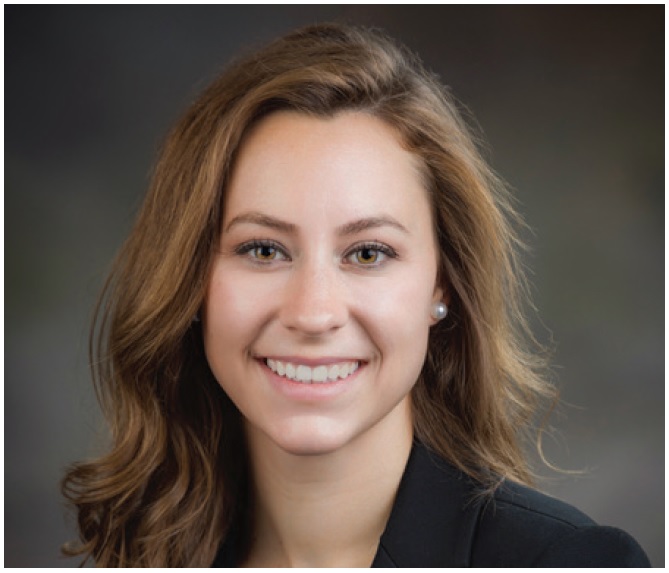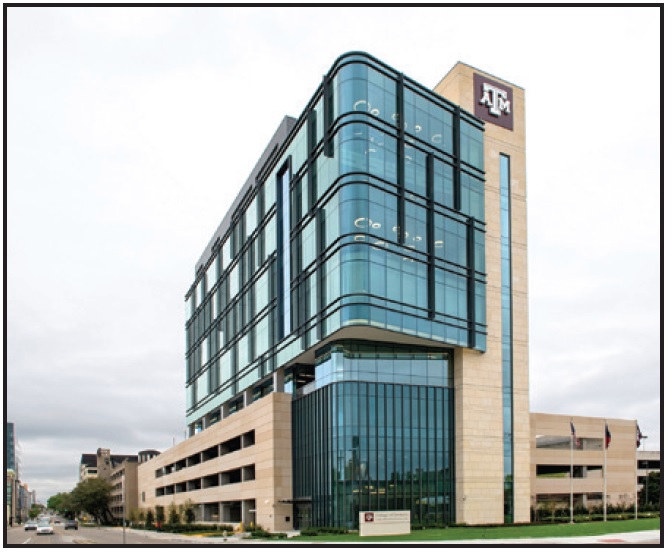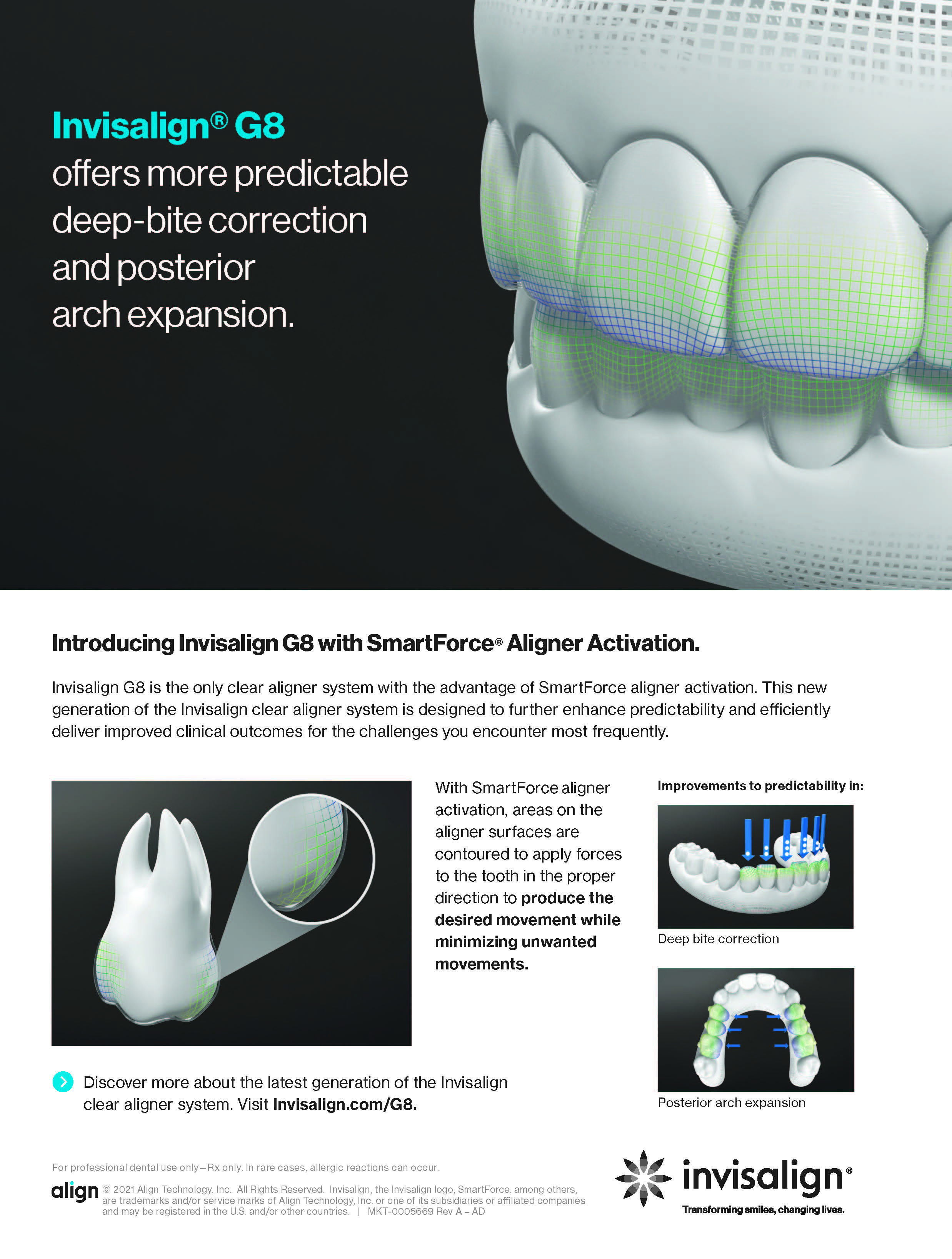2021 Eugene L. Gottlieb JCO Student of the Year: Dr. Amanda Gross
The Journal of Clinical Orthodontics is proud to name Dr. Amanda Gross from Texas A&M University as the winner of the 2021 Eugene L. Gottlieb JCO Student of the Year Award, presented by American Orthodontics. Dr. Gross was selected over 16 other students from schools around the United States in a two-stage, months-long competition judged by members of the JCO editorial board. Her prize includes more than $8,000 worth of products and services from American Orthodontics, JCO, and Dolphin.
Dr. Gross is the sixth Student of the Year award winner, joining Dr. Saro Atam of Stony Brook University (2020), Dr. Katya Skillestad of Texas A&M University (2019), Dr. Samaneh Mojarrad of the University of Pennsylvania (2018), Dr. Moataz Elmahdy of the University of Rochester (2017), and Dr. Krystian Jarosz of Rutgers University (2016). Texas A&M thus becomes the first school to produce two Student of the Year award winners.
Any U.S. orthodontic department was eligible to nominate one current student by submitting two letters of recommendation and the student’s personal essay. Each student was then given the materials from an unpublished case and asked to write a complete treatment plan, including all possible alternatives, within two weeks. Three JCO editorial board members narrowed the initial group of 17 nominees down to 12 finalists in December. In the second stage, each of the finalists submitted an ABO-style case report. Moderated by JCO’s Editor-in-Chief, Dr. Robert Keim, the judging panel included Dr. S. Jay Bowman of Portage, Michigan; Dr. John Graham of Salt Lake City; Dr. Neal Kravitz of South Riding, Virginia; Dr. Sarah Shoaf of Winston-Salem, North Carolina; Dr. Peter Sinclair of Los Angeles; and Dr. Kelton Stewart of Indianapolis.
As in past years, the judges were highly impressed by the quality of submissions. To give clinicians around the world an opportunity to see some of the same material, JCO will now publish the cases submitted by the top three finalists as online-only articles, beginning with Dr. Gross’s “Treatment of Open-Bite Tendency with a Miniscrew-Supported Transpalatal Arch and Myofunctional Exercises” in this issue. The June issue will spotlight Dr. Cristina Sola Martin from the University of Southern California, and July will conclude the series with Dr. Maria Karakousoglou from the University of Texas at San Antonio. All 12 finalists will be featured on our Facebook page in the coming months.
Congratulations to Dr. Gross and Texas A&M! Current orthodontic students and faculty can expect the start of the 2022 nomination process in August.
PHILIP B. VOGELS
VP of Marketing and Business Development
Q&A with Dr. Amanda Gross
Can you tell us a little about yourself?
I was born and raised in El Paso, Texas. My father is a dentist, my mom is a nurse, and I have five siblings. As one would imagine, my household was a bit hectic growing up! My parents are an amazing team and masterfully managed to coordinate everyone’s schedules so that we could all participate in sports, music, scouting, and church activities while also, of course, ensuring our success with academics. One fun fact about my family: everyone was required to play at least two instruments, if not three! I started playing the piano at age 5, violin at 10, and flute at 11. My love for music transitioned into a degree in flute musical arts at Vanderbilt University before I pursued dentistry. I met my husband in dental school at the University of Texas at San Antonio, and we got married right before heading up to Dallas for my orthodontic residency. We love playing with our cat, working out, and exploring the wonderful city of Dallas. We’re expecting a baby in July and are so excited for the wonders of parenthood to come!

Dr. Amanda Gross
Why are you pursuing a career in orthodontics?
Dentistry has always been a large part of my life. Growing up, I knew from an early age that I wanted to follow my father’s footsteps into dentistry. It wasn’t until I entered dental school, however, that I even considered orthodontics. I think the goal-oriented nature of orthodontics was what initially intrigued me during dental school, and after shadowing some orthodontists in San Antonio, I realized that orthodontics had aspects of everything I wanted in a career. I like that orthodontics is like a puzzle, and that each time you see the patient you get closer to solving it. I also love the relational aspect of orthodontics. We get the opportunity to really make an impact on many of our patients’ lives, and it’s an added bonus that we get to work with a blend of pediatric and adult patients.
Can you describe the path that led you to Texas A&M?
Like many, I entered residency immediately following dental school graduation. When applying, I was looking for a program that was not only strong clinically and academically, but also had a family atmosphere where I’d find lifelong colleagues and friends. Texas A&M checked all the boxes, and, needless to say, match day was a dream come true!
What has surprised you the most during your orthodontic education?
Before residency, I had no idea how much orthodontists evaluated and could actually affect the facial appearance of an individual. I like how we are not only concerned about the functionality of our patients’ teeth, but also trained to help our patients look their best.
What has been the most difficult part of becoming an orthodontist?
I’d say the most difficult aspect is the amount of time spent in education to get to this point! It’s a tumultuous road, having to excel in high school, college, and dental school simply to get into an orthodontic program. I’ve spent about 90% of my life in school!

Texas A&M College of Dentistry (photo courtesy of Texas A&M).
What, so far, has been your most rewarding orthodontic experience?
During my first year, I was able to join one of my faculty members, Dr. Monte Collins, on an orthodontic mission trip to Roatan, Honduras. We served the community there by treating the local children with free orthodontic care. Dr. Collins has prioritized their care by making the trip three to four times per year, and he has a pediatric dentist follow through with the treatment plans and emergencies while he’s away. The families were so grateful for the services we provided, and we could tell that the confidence of the patients soared as their treatment progressed. I had everything set to go back during March 2020, though COVID-19 unfortunately altered my plans. Nonetheless, this experience has motivated me to give back to my local community as much as I can and hopefully set up a similar clinic in the future.
What has been your most difficult case so far?
I have a 15-year-old female patient who was missing all of the second premolars, the upper second molars, and all of the third molars except the upper left. She had a fairly dished-in profile; three retained second deciduous molars (upper right and upper and lower left), with the upper right and lower left being ankylosed; severe maxillary posterior bone loss; peg-shaped lateral incisors; a full-step Class III molar relationship on the right side and a half-step Class III on the left; and both midlines shifted to the right (the upper 2mm right and the lower 3mm farther right of the upper). We decided to open space for implants to replace all the missing second premolars and build up the upper lateral incisors (which I did in-clinic) to idealize space until she’s ready for full-coverage crowns. During treatment, we maintained the upper second deciduous molars for bone maintenance and used lower miniscrews bilaterally for the lower right molar distalization. We had to extract the lower left second deciduous molar and hemisect the upper right one to help idealize implant spacing and shift the midlines to the left. It was a real head-scratcher of a case each time I saw her with my attending faculty! Thankfully, I was able to debond her in March 2020, immediately prior to her maxillary sinus lifts and bone grafts.
Any research projects you’d like to tell our readers about?
My master’s thesis assessed the short-term effect of lateral deviation on the transdifferentiation of hypertrophic chondrocytes into osteoblasts. The purpose was to further understand the regulation mechanism of condylar growth, since it’s become clear over the past few years that rather than dying, chondrocytes can directly transdifferentiate into bone cells during growth. For my experiment, I obtained 33 four-week-old transgenic mice and divided them into control and experimental groups. I bonded appliances on the experimental group to shift their mandibles for five days, comparing the effects of protrusion on one experimental side and retrusion on the other experimental side with the non-shifted mice. We found that the experimental group developed asymmetrical mandibles, with the protrusive side being longer than the controls and the retrusive being shorter. The protrusive condyle showed an increase in both chondrogenesis and chondrocyte-derived osteogenesis, especially in the posterior third, while the reverse was seen on the retrusive side. These findings could be applied to protrusion with Class II functional appliances and retrusion with Class III appliances, highlighting an increased posterior growth direction with protrusion and a decreased posterior growth direction with retrusion, at least in the short term. Mechanistically, we found that hypertrophic chondrocytes are key players in the changes of growth upon loading and may be helpful targets in the future.
What are your postgraduate plans?
Upon graduation, I’m planning on returning to El Paso. I’ll likely start out working part-time while transitioning to motherhood, though the exact practice details are still in the works.
What do you think orthodontics will look like in 10 years?
I believe the use of in-house clear aligner therapy will continue to increase, especially as companies make their software easier to manipulate. I also think the use of miniscrews will become more standard in the orthodontic community. This would likely help practitioners affect growth more profoundly and minimize the need for some compliance-driven treatment mechanisms.
Rapid-Fire Round
How can orthodontists thrive in today’s competitive marketplace, particularly with the increase in dentists offering various forms of orthodontics?
I believe that if we, as specialists, provide excellent results with increased predictability and efficiency, patients will see the differences in quality and seek out those who are equipped to treat all cases well. It’s our responsibility to show our patients that we have learned and will continue to learn all that we can to make their treatment the best it can be.
Social media: Should it be a major tool in an orthodontist’s marketing arsenal?
Social media consumes much of today’s society. Thus, I’d say it’s likely just as important as any other marketing tactic, especially given that patients are often attracted to many direct-to-consumer products because of targeted marketing on social media platforms.
Clear aligners: What malocclusions should they be considered or not considered for?
While I would consider my knowledge on clear aligners to be rather limited, I’d say clear aligners are notoriously difficult in correcting deep bites, bimaxillary protrusion, transverse discrepancies, and impactions. On the other hand, I’ve seen some interesting cases utilizing a combination of fixed appliances and aligners, and I think the future has a lot to hold.
TADs: Are we moving toward too much temporary anchorage device (TAD) usage, or will applications continue to increase?
I personally think TADs are incredibly helpful, and their application will likely continue to increase with advances in TAD research. TADs can help us, as orthodontists, treat patients more efficiently with less reliance on patient compliance—an aspect that I believe many patients benefit from and would prefer.
Extraction: Where do you stand on the debate?
To treat patients well, I don’t think one can be purely an extractionist or a nonextractionist. Extractions are necessary in some cases to optimize esthetics, stability, and efficiency, and I believe ideal treatment objectives always help me to determine whether it’s an extraction or nonextraction case.
Retention: Should patients always be pushed toward permanent retention, and how long should we continue to see them on recall visits?
I’m sure I’ll develop more opinions as my experience grows, but from what I’ve gathered, it’s best to discuss the pros and cons of fixed vs. removable retainers with patients and allow them to make an educated decision on the matter. I would say, however, that removable retainers are helpful in any cases that require space closure, with or without fixed retainers, and that it seems best to regularly schedule patients every few months until a year after debonding and then allow them to schedule appointments if needed after that.
Phase I treatment: Overused, underused, or properly used?
I believe every practitioner has tendencies of either overusing, underusing, or properly using Phase I treatment. In my opinion, Phase I treatment has its place and appears to be beneficial in situations involving crossbites, psychosocial problems, potential trauma, or space maintenance.
Accelerated orthodontics: What does the future hold?
One of the largest hurdles to combat with orthodontics is the time required to achieve a beautiful and healthy smile. Currently, several studies have demonstrated some positive effects in techniques such as micro-osseous perforations and corticotomies, though the limitations often shown are the short-term nature of acceleration and the relatively invasive nature of many techniques. I don’t doubt that advances in research and technology will help minimize the cons and increase the pros to make them more widely applicable in the future.
Anything else you’d like to add?
I just want to thank JCO for this opportunity to share a bit more about myself with the orthodontic community. I’ve enjoyed getting to think critically about orthodontics, and I look forward to officially entering the profession!



COMMENTS
.